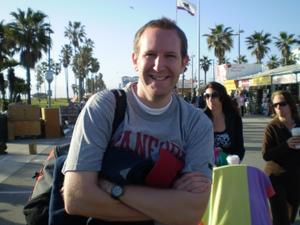ESP Biography
PHILIP LABO, The Most Amazing Teacher Ever!!!
|
Major: Statistics College/Employer: Stanford University Year of Graduation: G |

|
Brief Biographical Sketch:
Biologist turned statistician Philip Labo is in the final year of his PhD at Stanford. His interests include probability theory and population genetics. When he's not busy teaching and doing research, he enjoys buying really nice shirts, looking for interesting vegetables at the farmer's market, cooking, eating out, and riding his Xootr. Past Classes(Clicking a class title will bring you to the course's section of the corresponding course catalog)M731: What is Probability? What is randomness? in Splash! Spring 2010 (Apr. 17 - 18, 2010)
We use probability to quantify chance, that is, to quantify the relative likelihood of various outcomes for a future random experiment. Question: If 23 individuals independently and evenly choose among 365 birthdays, what is the probability that all have a unique birthday?
In this class we will explore several calculations from probability theory, and, more importantly, we’ll examine the assumptions that underlie these calculations. For example, in the birthday problem, is the assumption that individuals choose birthdays evenly a good assumption? Does it hold in practice?
In addition to birthdays we’ll consider card tricks (is a deck of cards random after three riffle shuffles?) and coin tosses (is the probability of heads the same as the probability of tails?). A combination of experimentation and calculation will lead to elucidating results.
M541: The Mathematics of Gene Evolution in Splash! Fall 2009 (Oct. 10 - 11, 2009)
In this course, I will discuss several probabilistic models of evolution. In the first hour I'll discuss two discrete time processes: the Wright-Fisher model (which looks into the future) and Kingman's coalescent (which looks into the past). In the second hour, we'll turn to the continuous-time model of Moran. Mathematical objects called interacting particle systems can be brought to bear in the analysis of Moran model dynamics. We'll discuss these and again see that the analysis benefits from looking both forwards and backwards in time. In sum, this course will provide a concise view of techniques used in the modeling of evolution through time.
|
|
